 Facebook
Facebook
 X
X
 Instagram
Instagram
 TikTok
TikTok
 Youtube
Youtube
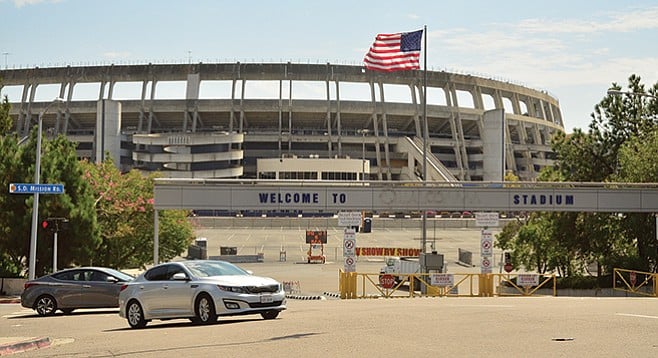
San Diegans vote next year on the plans of FS Investors to tear down Qualcomm Stadium, erect a soccer stadium, and build residential and commercial structures on the site. Before the vote, propaganda will fill the air. The investment group will claim that the program will do wonders for the San Diego economy. Balderdash.
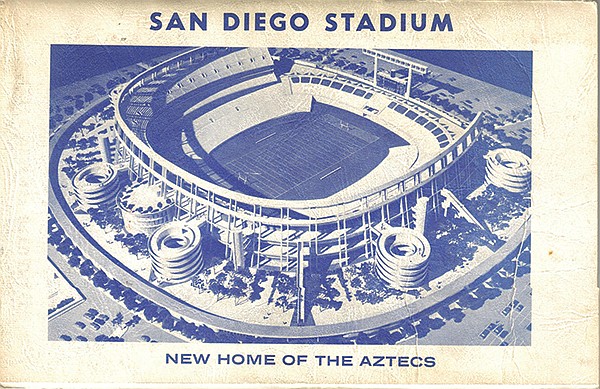
There is only one rational use for the more than 200 acres of stadium site and adjoining wetlands. That is San Diego State University. It had earlier attempted to have a joint venture with FS but in May pulled out of the talks.
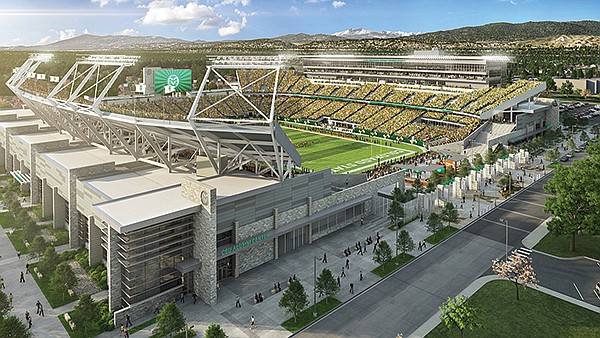
Now the university wants to develop the site on its own. The city says the site is worth $82.8 million. “We would be willing to pay a negotiated purchase price” around that $82.8 million figure, says Gina Jacobs, the university’s chief of staff.
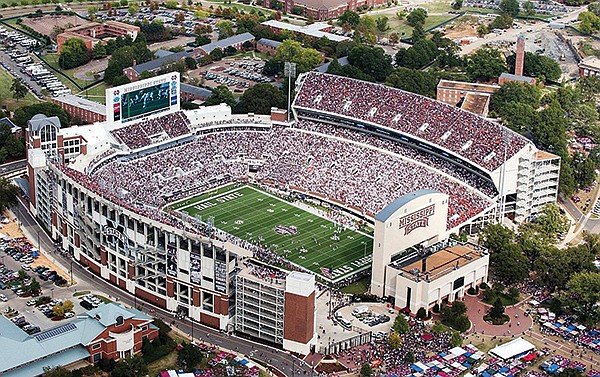
There should be no argument whether the FS plan or the San Diego State project would be better for the local economy. Higher education wins. Jaison Abel and Richard Deitz of Liberty Street Economics, a blog of the Federal Reserve Bank of New York, say that in addition to direct economic impacts (such as university employees), colleges and universities “help to raise the skills of an area’s workforce — its local human capital.”
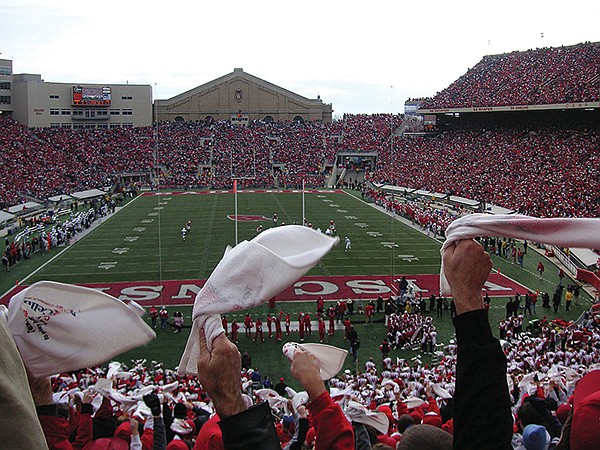
By educating potential workers, these institutions increase both the supply and demand for human capital. A skilled workforce will attract companies to the area. Regions with a higher percentage of the population with at least a bachelor’s degree “tend to be more innovative, have greater amounts of economic activity, and enjoy faster economic growth,” say the researchers, noting that workers in such regions are more productive and have higher wages.
Of course, universities, like pro teams, inflate claims of how they contribute to local economies. In 1994, Loyola University Chicago claimed it boosted the Chicago economy by $1.04 billion. A dozen years later, Northwestern, about the same size and located fairly close to Loyola, said it boosted the Chicago economy by only $145 million. The “multiplier” is supposedly a measure of how many new jobs can be created for every one existing job. Among 98 schools, the multiplier varied from 1.03 to 8.44. Hmm...
According to the SDSU Alumni Past Presidents Council, only 8000 of 80,000 applicants were enrolled last year. The student body could be expanded and the faculty could attract more talent if the university gets additional land, particularly since the Mission Valley site is easily reachable by light rail.
San Diego State’s plans for stadium land are: (1) A river park. (2) Affordable and market-rate housing for upper-division and graduate students, faculty and staff, and the general public. (3) Commercial/office space to be developed through a public-private partnership. Occupying the space would be research facilities, faculty and staff offices, and the like. (4) Complementary retail and restaurants to service student and faculty needs and the public. (5) A hotel to support visitors and serve as a training ground for the university’s hospitality/tourism management school. (6) A 35,000- to 40,000-seat stadium for Aztec football, expandable to accommodate university growth and, possibly, another National Football League team.
San Diego State should be cautious with number five and unceremoniously jettison number six. A hotel should be built only with private capital. The owner should reimburse the university for the land it uses. Such a hotel could still serve as an incubator for tourism students.
There is no reason on earth that San Diego State should tear down Qualcomm and build a new stadium. Qualcomm is an architectural wonder, an icon. It may soon get a “historic” designation. It would take four to five years just to get permits to tear it down, and there would inevitably be lawsuits. The cost of the teardown could be as much as $60 million. A group of architects went through Qualcomm in 2011 and said it should be preserved. Frank Hope Jr., whose company designed Qualcomm, says it is quite serviceable now.
Sportswriters claim it is a “dump.” But dig deep into their psyches and you’ll find that their major complaint is that the press boxes aren’t plush. Not a real problem. Qualcomm doesn’t have enough luxury boxes for super-rich alumni. Can’t they sit in the stands for three hours?
Qualcomm has problems, but they are hardly insuperable. There are cracks to be repaired, stains and blemishes to be removed, concrete flaking to be fixed up, and ladies’ rooms to be added and expanded. No doubt other flaws will surface. A rehab job would probably cost $300 million to $400 million, but that would be half or less than the cost of a new stadium. The savings will leave more money for education — which is the purpose of universities.
The Aztecs averaged 37,000 per game day attendance last year. The fans get lost in a stadium seating more than 70,000. So what? Certain sections could be blocked off. The number of supporters will increase if the team keeps winning and the university grows. Seat capacity could be reduced by use of the wrecking ball — returning, say, to the original horseshoe configuration. Those wonderful mountain views would return. Capacity was around 50,000 when the Chargers opened the stadium in 1967.
Chief of staff Jacobs says the Aztecs will play at Qualcomm for a while, probably until a new stadium is ready. But the most historic university stadiums are far older than Qualcomm. Of 130 Division I National Collegiate Athletic Association stadiums, 38 were built in 1930 or before, making them between 87 and more than 100 years old. Who plays in those old, old stadiums? Some of the best teams in the country: Notre Dame, Michigan, Washington, Texas A&M, Arizona, Florida, Georgia Tech, Oklahoma State, Alabama, Cal-Berkeley, Wisconsin, Texas, Mississippi, Mississippi State, Oklahoma, North Carolina, Iowa, Southern California, Tennessee, Ohio State, University of California Los Angeles, Northwestern, Georgia, Virginia, Michigan State, and Louisiana State. Wisconsin, Mississippi, and Mississippi State play in stadiums more than 100 years old.
Fully 25 existing stadiums were built in the 1960s, as Qualcomm was. Only 15 new stadiums have been built since the year 2000. Fans at most of these universities watch games in the rain, snow, and cold. San Diego State has no such problems. It does not need a new stadium.


San Diegans vote next year on the plans of FS Investors to tear down Qualcomm Stadium, erect a soccer stadium, and build residential and commercial structures on the site. Before the vote, propaganda will fill the air. The investment group will claim that the program will do wonders for the San Diego economy. Balderdash.

There is only one rational use for the more than 200 acres of stadium site and adjoining wetlands. That is San Diego State University. It had earlier attempted to have a joint venture with FS but in May pulled out of the talks.

Now the university wants to develop the site on its own. The city says the site is worth $82.8 million. “We would be willing to pay a negotiated purchase price” around that $82.8 million figure, says Gina Jacobs, the university’s chief of staff.

There should be no argument whether the FS plan or the San Diego State project would be better for the local economy. Higher education wins. Jaison Abel and Richard Deitz of Liberty Street Economics, a blog of the Federal Reserve Bank of New York, say that in addition to direct economic impacts (such as university employees), colleges and universities “help to raise the skills of an area’s workforce — its local human capital.”

By educating potential workers, these institutions increase both the supply and demand for human capital. A skilled workforce will attract companies to the area. Regions with a higher percentage of the population with at least a bachelor’s degree “tend to be more innovative, have greater amounts of economic activity, and enjoy faster economic growth,” say the researchers, noting that workers in such regions are more productive and have higher wages.
Of course, universities, like pro teams, inflate claims of how they contribute to local economies. In 1994, Loyola University Chicago claimed it boosted the Chicago economy by $1.04 billion. A dozen years later, Northwestern, about the same size and located fairly close to Loyola, said it boosted the Chicago economy by only $145 million. The “multiplier” is supposedly a measure of how many new jobs can be created for every one existing job. Among 98 schools, the multiplier varied from 1.03 to 8.44. Hmm...
According to the SDSU Alumni Past Presidents Council, only 8000 of 80,000 applicants were enrolled last year. The student body could be expanded and the faculty could attract more talent if the university gets additional land, particularly since the Mission Valley site is easily reachable by light rail.
San Diego State’s plans for stadium land are: (1) A river park. (2) Affordable and market-rate housing for upper-division and graduate students, faculty and staff, and the general public. (3) Commercial/office space to be developed through a public-private partnership. Occupying the space would be research facilities, faculty and staff offices, and the like. (4) Complementary retail and restaurants to service student and faculty needs and the public. (5) A hotel to support visitors and serve as a training ground for the university’s hospitality/tourism management school. (6) A 35,000- to 40,000-seat stadium for Aztec football, expandable to accommodate university growth and, possibly, another National Football League team.
San Diego State should be cautious with number five and unceremoniously jettison number six. A hotel should be built only with private capital. The owner should reimburse the university for the land it uses. Such a hotel could still serve as an incubator for tourism students.
There is no reason on earth that San Diego State should tear down Qualcomm and build a new stadium. Qualcomm is an architectural wonder, an icon. It may soon get a “historic” designation. It would take four to five years just to get permits to tear it down, and there would inevitably be lawsuits. The cost of the teardown could be as much as $60 million. A group of architects went through Qualcomm in 2011 and said it should be preserved. Frank Hope Jr., whose company designed Qualcomm, says it is quite serviceable now.
Sportswriters claim it is a “dump.” But dig deep into their psyches and you’ll find that their major complaint is that the press boxes aren’t plush. Not a real problem. Qualcomm doesn’t have enough luxury boxes for super-rich alumni. Can’t they sit in the stands for three hours?
Qualcomm has problems, but they are hardly insuperable. There are cracks to be repaired, stains and blemishes to be removed, concrete flaking to be fixed up, and ladies’ rooms to be added and expanded. No doubt other flaws will surface. A rehab job would probably cost $300 million to $400 million, but that would be half or less than the cost of a new stadium. The savings will leave more money for education — which is the purpose of universities.
The Aztecs averaged 37,000 per game day attendance last year. The fans get lost in a stadium seating more than 70,000. So what? Certain sections could be blocked off. The number of supporters will increase if the team keeps winning and the university grows. Seat capacity could be reduced by use of the wrecking ball — returning, say, to the original horseshoe configuration. Those wonderful mountain views would return. Capacity was around 50,000 when the Chargers opened the stadium in 1967.
Chief of staff Jacobs says the Aztecs will play at Qualcomm for a while, probably until a new stadium is ready. But the most historic university stadiums are far older than Qualcomm. Of 130 Division I National Collegiate Athletic Association stadiums, 38 were built in 1930 or before, making them between 87 and more than 100 years old. Who plays in those old, old stadiums? Some of the best teams in the country: Notre Dame, Michigan, Washington, Texas A&M, Arizona, Florida, Georgia Tech, Oklahoma State, Alabama, Cal-Berkeley, Wisconsin, Texas, Mississippi, Mississippi State, Oklahoma, North Carolina, Iowa, Southern California, Tennessee, Ohio State, University of California Los Angeles, Northwestern, Georgia, Virginia, Michigan State, and Louisiana State. Wisconsin, Mississippi, and Mississippi State play in stadiums more than 100 years old.
Fully 25 existing stadiums were built in the 1960s, as Qualcomm was. Only 15 new stadiums have been built since the year 2000. Fans at most of these universities watch games in the rain, snow, and cold. San Diego State has no such problems. It does not need a new stadium.
Comments